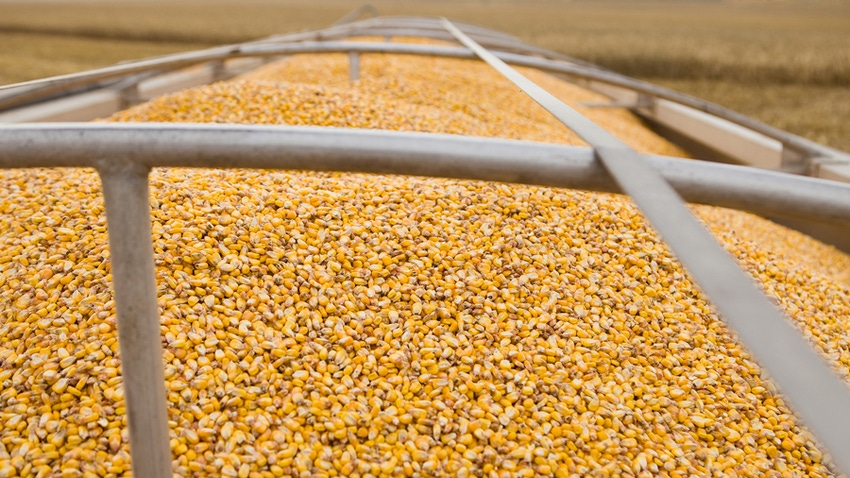
December 2023 Corn futures have traded in a very modest 25 cent trading range for the entire month of August. The market seems to be stuck for the moment as both yield and demand are in question.
What’s happened
Traders are aware that excessive heat on the corn crop throughout this summer, along with hit or miss rain fall, has been detrimental to corn yield. The crop yield is a far cry from the 181 trendline bushel yield that the USDA had initially pegged for this crop just a few months ago.
In light of the heat, the most recent USDA WASDE report pegged nationwide yield at 175.1 bushels per acre, with many traders believing that yield number needs to come down further on the upcoming September 12 USDA report.
From marketing perspective
Looking at that upcoming Sept. 12 USDA report, while the yield number will be scrutinized, many traders are also wondering if demand for exports will be reduced as well.
As of last week’s weekly corn export sales report, the U.S. old crop corn export commit is near 1,595 million bushels versus the USDA expectation of 1,625 million bushels. In truth, old crop exports are behind a bit from USDA expectations.
When looking at new crop export sales, many traders are fearing that the USDA will cut new crop export demand as well on the report. But I think it may be too soon to adjust that new crop export demand category lower.
Looking at new crop corn exports, current export commitments are only 289 million bushels as of last week’s weekly export sales report. The USDA pegs new crop corn exports at 2,050 million bushels.
Are we off to a slow start? Absolutely. But looking at the chart below, it is normal for corn exports sales to have a slow start this time of year. New crop corn export sales have a tendency to pick up in mid-to-late September.

Prepare yourself
December corn futures are trading at their lowest price since mid-year of 2021. Prices may be at a discounted bargain, especially if yield is less than expected. There are likely some global end users who may think that the American crop will be robust, but I am not so certain based on multiple conversations with both farmers and agronomists.
Harvest is going to come early due to the excessive heat we saw this summer and will see this upcoming weekend. Producers are suggesting the corn plants are shutting down, and that kernel depth is shallow, which ultimately leads to lower yields and lower test weight.
Seasonally, corn futures often have a tendency to find a harvest price low sometime within the next two weeks. And remember, as I pointed out a couple weeks ago, the average harvest rally over the past decade has been 64 cents once the market finds its “harvest low price.”
For global end users, it may be tempting to want to assume that the old “hand to mouth” purchasing may be the way to go this year, but maybe think twice. The U.S. crop will likely not be as big as the USDA is currently touting.
Also, the larger 2023-24 (on paper) global ending stocks are assuming a near record crop in both Brazil and Argentina for this upcoming growing season (November-March), and that crop is not yet in the ground, nor is Argentina in the clear regarding their ongoing drought.
U.S. corn is on sale.
Reach Naomi Blohm at 800-334-9779, on Twitter: @naomiblohm, and at [email protected].
Disclaimer: The data contained herein is believed to be drawn from reliable sources but cannot be guaranteed. Individuals acting on this information are responsible for their own actions. Commodity trading may not be suitable for all recipients of this report. Futures and options trading involve significant risk of loss and may not be suitable for everyone. Therefore, carefully consider whether such trading is suitable for you in light of your financial condition. Examples of seasonal price moves or extreme market conditions are not meant to imply that such moves or conditions are common occurrences or likely to occur. Futures prices have already factored in the seasonal aspects of supply and demand. No representation is being made that scenario planning, strategy or discipline will guarantee success or profits. Any decisions you may make to buy, sell or hold a futures or options position on such research are entirely your own and not in any way deemed to be endorsed by or attributed to Total Farm Marketing. Total Farm Marketing and TFM refer to Stewart-Peterson Group Inc., Stewart-Peterson Inc., and SP Risk Services LLC. Stewart-Peterson Group Inc. is registered with the Commodity Futures Trading Commission (CFTC) as an introducing broker and is a member of National Futures Association. SP Risk Services, LLC is an insurance agency and an equal opportunity provider. Stewart-Peterson Inc. is a publishing company. A customer may have relationships with all three companies. SP Risk Services LLC and Stewart-Peterson Inc. are wholly owned by Stewart-Peterson Group Inc. unless otherwise noted, services referenced are services of Stewart-Peterson Group Inc. Presented for solicitation.
About the Author(s)
You May Also Like






